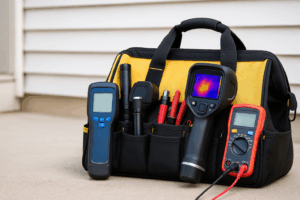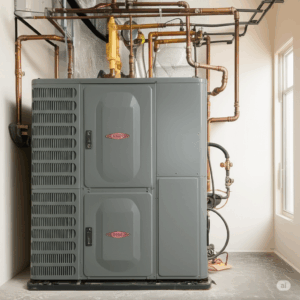When most people think about home inspections, they picture the buyer scheduling it after making an offer. There is another approach that has become one of the smartest moves a seller can make: the pre-listing home inspection. This simple step gives homeowners a clear advantage in today’s competitive real estate market. It can shorten the time on the market, reduce the likelihood of last-minute negotiations, and help sellers feel confident when they list. Walking into the selling process with a complete understanding of your home’s condition sets the stage for smoother discussions and fewer surprises.
A pre-listing inspection is a full evaluation completed before the property hits the market. The inspector reviews the same core components a buyer’s inspector will examine. This includes the roof, attic, insulation, electrical systems, plumbing, structure, foundation, HVAC, appliances, and exterior. By identifying issues on your schedule, you avoid the tension that comes when a buyer’s inspector discovers them under tight deadlines. For example, suppose the inspection shows that your water heater is nearing the end of its life. In that case, you can replace it in advance, strengthening your position and removing a common negotiation point.
One of the most significant advantages of a pre-listing inspection is the control it gives you. When you know your home’s condition up front, you can decide which repairs are worth completing. You have time to gather quotes, select the right contractors, and complete repairs without the pressure of an active purchase agreement. Buyers tend to feel more comfortable making strong offers on homes with documented repairs or recent professional evaluations. That confidence often leads to fewer delays and less back-and-forth when closing. A seller who addresses items such as minor plumbing leaks or electrical concerns before listing usually receives quicker offers and smoother transactions.
Transparency is another significant benefit. Sellers who provide an inspection report at the start set clear expectations. Buyers walk in knowing the home’s strengths and any areas that might need maintenance. This dramatically reduces the chance of unexpected findings popping up during the buyer’s inspection. When both sides already understand the home’s condition, negotiations stay focused on what truly matters. This openness builds trust, accelerates the process, and reduces the risk of deals falling apart late in the transaction.
A pre-listing inspection also supports more accurate pricing. Real estate agents often stress how difficult it can be to set the right price when hidden issues exist. A home with unaddressed repairs will usually reveal them through low offers or reduced buyer activity. When you know the actual condition of your home, you can price it realistically. A well-cared-for home with a clean inspection report may warrant a higher asking price. A house with known repairs can be priced to attract the correct type of buyer and avoid frustrating renegotiations. In several cases, a solid inspection report has been the difference between multiple offers and a listing sitting with little interest.
Some sellers worry that disclosing defects will scare people away, but the opposite is often true. Buyers value honesty. They appreciate seeing a home that a neutral professional has evaluated. This transparency helps your listing stand out. Buyers know exactly what they are getting, which leads to faster offers and fewer objections. I think providing a detailed inspection report also makes your liability because you have shown good faith and thorough disclosure.
A pre-listing inspection can even improve visual appeal. Inspectors often note minor maintenance issues that homeowners overlook, such as loose handrails, missing GFCI outlets, slow drains, roof flashing adjustments, or soffit vent concerns. Addressing these items can dramatically improve the presentation of your home during showings and photos. A well-maintained house creates a strong first impression and may justify a higher market price.
Homeowners in Minnesota often search for terms such as pre-listing home inspection, seller inspection, home inspection for sellers, Minnesota home inspector, and preparing your home for sale. Using these topics naturally helps connect with the people who are actively preparing to sell.
In the end, a pre-listing inspection is one of the best tools a seller can use to stay ahead of potential problems. It reduces stress, increases buyer confidence, helps with pricing, and supports a faster closing. This proactive step strengthens your position and improves the overall selling experience, giving you peace of mind from start to finish.




